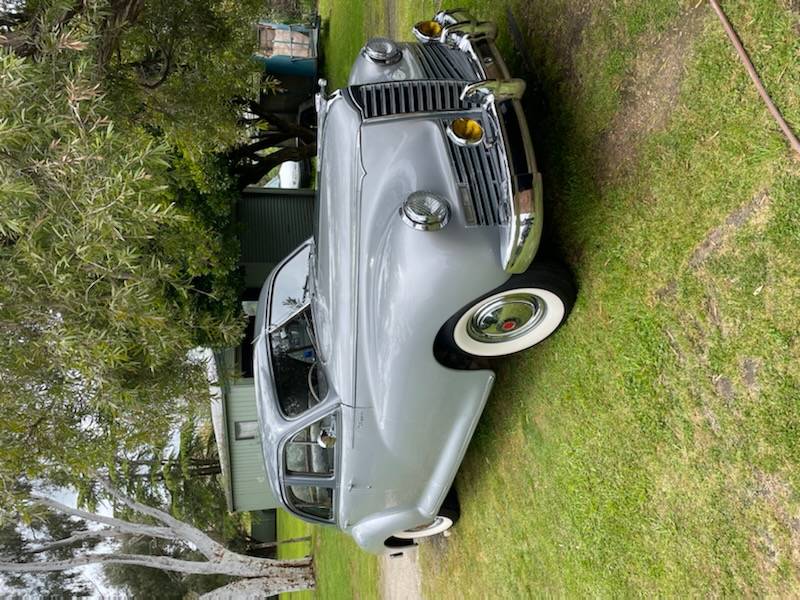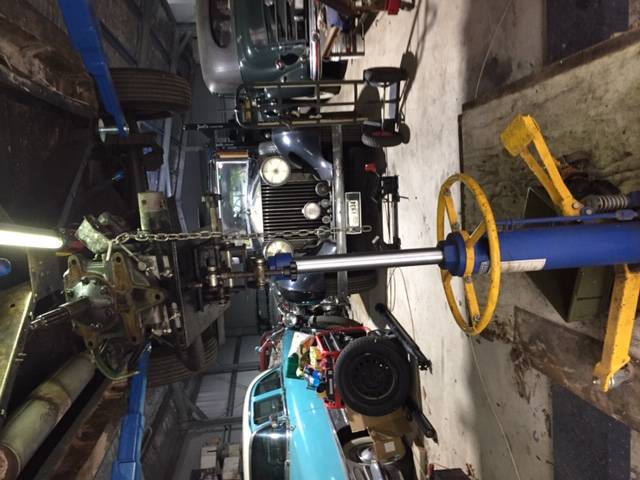|
Re: Bench testing solenoids...the right way...advice please
|
||||
|---|---|---|---|---|
|
Home away from home
|
Yeah, there is, or certainly there should be. I recently went through this gyration with a 356 gear reduction starter solenoid. Like as not, you're going to have to play with it. I'd first suggest to quit using the charger and hook your cables to the 6V battery.
The solenoid is a relay. So, with 4 posts, you likely will have hot going to 2 of the posts. The 3rd post will carry current to whatever moves when the electromagnet is activated. The 4th one is grounded to activate the electromagnet inside the solenoid. In my test, the starter began to run when the circuits were completed. I used the positive jumper cable to ground to the starter body. I have a R11 transmission out of the car. If it would be of service to you, I can talk to you on the phone this weekend, remove the solenoid from my transmission/overdrive, and (if the damned things isn't fried) figure out how to test it with you so you can determine what's what with yours. Shoot me a PM if so. Otherwise, take a whack at this and I hope it works. Experimentation is half the fun. I also have a 1947 Clipper 6 and an 8 to go into it at some point, so your project is right up my alley. Best wishes to you!!!
Posted on: 2023/2/22 6:22
|
|||
|
If you're not having fun, maybe it's your own damned fault.
|
||||
|
||||
|
Re: Bench testing solenoids...the right way...advice please
|
||||
|---|---|---|---|---|
|
Forum Ambassador
|
The solenoids need a large amount of current when pulling in. Your rectifier setup may not be able to supply that much current to a surge load. Once it pulls in the heavy pull in coil is disconnected and the hold coil keeps the plunger extended requiring only a few amps to stay in this condition. Better would be to use a battery as the power source and make sure the connecting wires are at least as large as those in the car.
The R-11 solenoid has two terminals. The pull in and hold coils are connected together inside the case and terminal 4 supplies power to both coils. Terminal 6 is for the ign cutout circuit. To activate the R-11 you need a connection to the case for ground and another to 4. Again, power supply and wiring must be capable of supplying a heavy surge of current for at least a second or so. The R-9 solenoid is a bit different in that it has 4 terminals with the pull in and hold coils being separately powered. Terminal 3 is the hold coil and 4 is the pull in coil. Terminal 6 is for the cut out circuit and 7 is for controlling the dash indicator light. To activate that solenoid both terminals 3 and 4 need to be connected together and then both powered at the same time via a heavy wire and solid power source, case still being ground. In actual use, the hold coil, terminal 3, is in series with one of the relay coils so operates at a slightly different voltage. When testing try not to leave it connected to direct power longer than necessary or it could overheat. On both solenoids, once the plunger is almost all the way out an internal contact opens and cuts power to the pull in coil. At that time the hold coils will keep the plunger extended. The hold coils are not strong enough by themselves to make the plunger move against the heavy springs. On the R-9, if both 3 and 4 are not powered simultaneously, the solenoid will "machine gun". The solenoid will pull in, internal contact breaks the connection to the pull in coil and the plunger relaxes only to start the action over again as soon as the internal contact closes because there is no hold coil to keep the plunger extended. The internal contacts for the pull in coils were a service item and do arc, spark and wear. If they are not making good contact so the pull in coil can get activated the solenoid will never pull in.
Posted on: 2023/2/22 10:14
|
|||
|
Howard
|
||||
|
||||
|
Re: Bench testing solenoids...the right way...advice please
|
||||
|---|---|---|---|---|
|
Home away from home
|
Thanks Howard and Wat for that information. I shall use a 6V battery and hard wiring and see how it goes. Peter T
Posted on: 2023/2/22 16:12
|
|||
|
I like people, Packards and old motorbikes
|
||||
|
||||
|
Re: Bench testing solenoids...the right way...advice please
|
||||
|---|---|---|---|---|
|
Home away from home
|
As Wat said, use a battery, not a charger as chargers whether old style or more recent typically put out pulsating DC rather than pure DC.
Posted on: 2023/2/22 16:26
|
|||
|
All generalities are false.
Once I thought I was wrong but I was mistaken. Don Pierson Packard / IMPERIAL page CA DMV Licensed Vehicle VIN Verification 1951 Henney-Packard 3-Door Long Wheelbase Air Force Ambulance The 1951 Henney-Packard is For Sale! 1954 Packard Patrician 1954 Packard Patrician Parts Car 1956 Clipper Custom Sedan |
||||
|
||||
|
Re: Bench testing solenoids...the right way...advice please
|
||||
|---|---|---|---|---|
|
Home away from home
|
You're welcome.
Nice looking shop, BTW.
Posted on: 2023/2/23 6:10
|
|||
|
If you're not having fun, maybe it's your own damned fault.
|
||||
|
||||
|
Re: Bench testing solenoids...the right way...advice please
|
||||
|---|---|---|---|---|
|
Home away from home
|
I prefer to test things with the meter first before applying large currents. Makes sure it goes where it's supposed to. Large current, like in 6V circuits, can fry stuff fast.
Check the coils for ohms or continuity first. If what is open is open and what shut is shut, then should operate with power, if it's not worn/stuck and a bit-o-lube maybe applied before. It might not be working on charger power because it's not working. A bigger hammer won't fix that.
Posted on: 2023/2/24 14:37
|
|||
|
||||
|
Re: Bench testing solenoids...the right way...advice please
|
||||
|---|---|---|---|---|
|
Home away from home
|
Sounds like good advice. Does anyone know how many ohms resistance the coils on an R9 and R11 Solenoid should be on test please ?
Posted on: 2023/2/24 17:11
|
|||
|
I like people, Packards and old motorbikes
|
||||
|
||||
|
Re: Bench testing solenoids...the right way...advice please
|
||||
|---|---|---|---|---|
|
Forum Ambassador
|
I have never found a spec for resistance but I suspect the coil ohm values will be so low they will be hard to check with a typical ohmmeter. On both solenoids the pull in coil is wound with a heavy gauge wire so will read almost a direct short between the terminal and the case. The hold coil is wound with thinner gauge so might read a few tenths of an ohm but no idea what the value would be. An actual open for either coil would be the only definitive test I think you could be sure of.
On the R-11 solenoid the coils are in parallel and both connect to terminal 4. The only way to individually check them would be to measure from the terminal to the case to get a reading and then pull the plunger out by hand to open the turn off contact and disconnect the pull in coil. I have never tried it but logically there should be a small increase in the ohm reading when the heavy wire pull in coil path is opened. On the R-9 the coils are individual so checking from 3 to case will get the hold in coil value and from 4 to case would be the pull in coil. On both solenoids the disconnect contact does open the pull in coil path and should have 0 ohms across it. Since it is a service item exposed to arcing and burning, if that has happened there could be a resistance or an open that should not be present and would warrant investigation..
Posted on: 2023/2/24 17:34
|
|||
|
Howard
|
||||
|
||||
|
Re: Bench testing solenoids...the right way...advice please
|
||||
|---|---|---|---|---|
|
Home away from home
|
Thanks Howard, I shall try that. Peter T
Posted on: 2023/2/24 22:28
|
|||
|
I like people, Packards and old motorbikes
|
||||
|
||||

 IMG_2290.jpeg (104.25 KB)
IMG_2290.jpeg (104.25 KB)
 Pulling R9 OD from 46 Clipper 6 Jan 23.JPG (40.49 KB)
Pulling R9 OD from 46 Clipper 6 Jan 23.JPG (40.49 KB)








